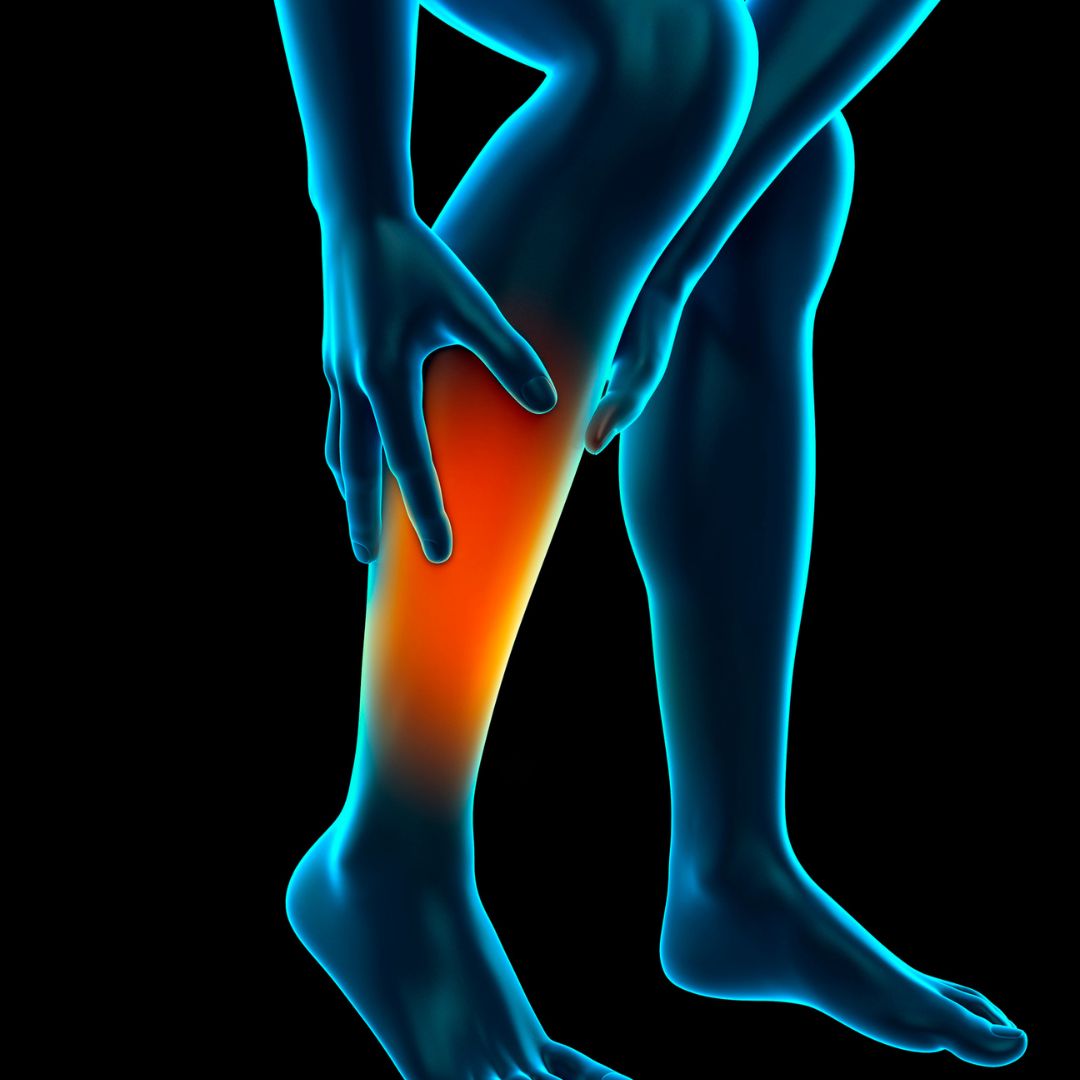Lower leg pain? Common Injuries in Runners & Treatments
Most people probably know that the knee has the highest incidence of injury in runners. But not many realise that the next most vulnerable area is the lower leg. It is partly because of the wide range of injuries that can occur between the ankle and the knee. We look at some of the most common below, including calf strain, Achilles tendonitis, and shin splints.
Anatomy of the calf muscles
The calf consists of two main muscles. Gastrocnemius forms the belly of the calf. And the soleus muscle sits beneath it. The calf is attached to the heel by the Achilles tendon. This is a long fibrous tendon with notoriously poor blood supply.
Lower leg injuries
Calf Strain (pulled calf muscle)
Symptoms: A feeling of sharp pain, tightness or weakness in the calf. Often accompanied by mild swelling. Occasional spasms, and more pronounced pain when standing or walking.
Cause: Overstretching or tearing of either of the two muscles of the calf. Often caused by accelerating during running or changes in direction. Often due to a lack of flexibility or poor conditioning, overexertion and fatigue, or not warming up properly before running.
Prevention: Making sure that you thoroughly warm up and cool-down as per our recommendations set out above. Also, ensure that all increases in training load are progressive and incremental.
Treatment: As usual, at first instance, use the RICE method. Rest, and stop running. Apply Ice (or a bag of frozen peas or similar) to reduce swelling. Wrap the ankle in a soft cloth and apply to the calf for about 8-10 minutes. Repeat about every 2 hours until the swelling goes down. Likewise, use an elasticated support bandage for compression, which also reduces swelling. Elevating the calf above the heart (when possible) will also help.
Only once the immediate damage has healed, typically after at least a few days, you should get a massage (and from a qualified sports therapist rather than a “spa”-type masseuse). Don’t return to running until the calf is completely free from pain and swelling. Recovery time depends on the severity of the injury. For a mild strain, it takes three to six weeks with basic home care. For more severe strains, recovery can take several months, and physical therapy (or even surgical repair) may be necessary.
Achilles Tendonitis
Symptoms: Dull ache or sharp pain on the tendon when pushing of from the foot. Tenderness/stiffness in the tendon that lessens as you warm up. Creaking sound when you touch or move your Achilles tendon.
Cause: This is a chronic injury that builds over time. Often caused by increasing mileage or running speed too quickly. Can also be brought on by hill running or hill repeats.
Prevention: As for calf strain (see above). In addition, it is really important to include bent knee calf stretches as part of your post-stretch routine.
Treatment: Achilles tendonitis needs more rest than many other injuries; usually a minimum of two weeks, but longer for more serious cases. To help restore it properly it is advisable to do specific strengthening exercises prior to recommencing running. Standing or seated calf lowering is very beneficial. We recommend consulting a physiotherapist to ensure full rehabilitation.
Shin Splints
Symptoms: Pain felt over the inside of the tibia (shin bone), often dull and aching. Worsens during running. Often accompanied by tenderness and swelling around the area.
Cause: Although causes can vary, the main cause in runners is the repetitive stress on the anterior tibialis muscle. This stress leads to an inflammation on the bone attachment site of the tibia.
Prevention: Ensure you have the right footwear. Vary the types of surface you run on (hard surfaces exacerbate shin splints), and allow adequate rest for tired and sore muscles.
Treatment: Rest (normally for up to two weeks), ice compression and massage. It is often possible to cross-train during recovery with activities such as swimming, yoga or Pilates.
If you are dealing with lower leg pain our osteopaths, sports therapist and physio can help!
We hope this information is useful for you. If you need advice or have any questions about our treatments, please contact us. You can find us in Mill Hill Broadway and Islington. We are always happy to help. If you like this blog, please share!



